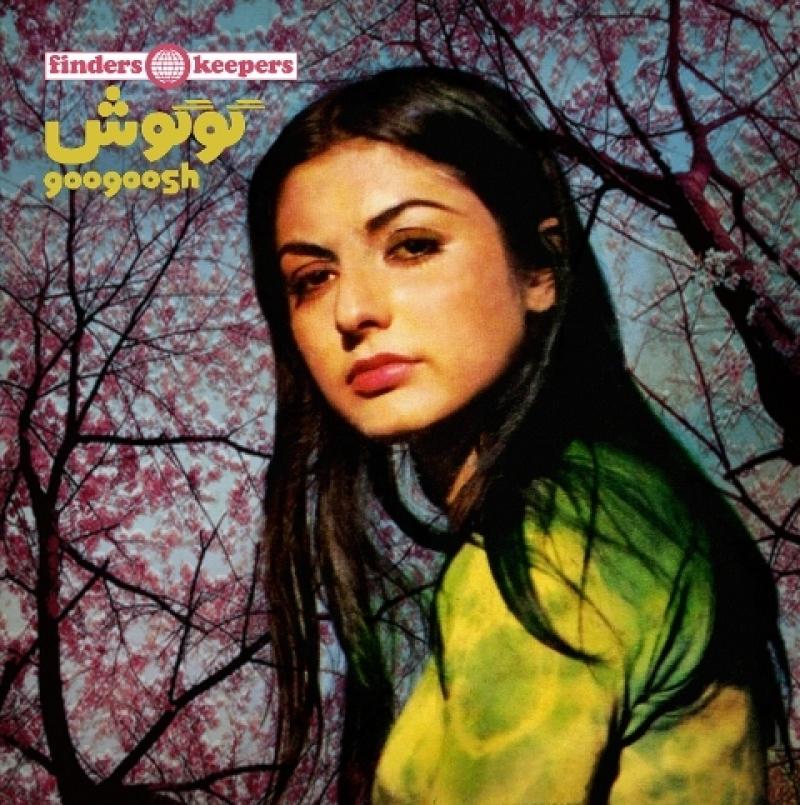Iran’s pre-1979 pop music begins to reach the outside world | reviews, news & interviews
Iran’s pre-1979 pop music begins to reach the outside world
Iran’s pre-1979 pop music begins to reach the outside world
Iran's Seventies pop begins attracting non-local attention over 30 years after the shutters came down

Pop music was virtually eradicated from Iran in 1979 after the deposition of the Shah and arrival of Ayatollah Khomeini in power. Before then, the thriving scene supported many stars that drew on both local traditions and Kurdish music. Googoosh was a huge star, but she stayed in Iran after 1979 and was unable to record. Moving to Los Angeles in 2000 allowed her to perform and begin recording again. The arrival of a new British compilation covering 1970 to 1975 is fascinating.
Pre-1979 Iranian pop is largely unfamiliar outside the country itself and the expat community. Googoosh isn't the only Iranian singer in LA, others include Shohreh Solaty, Mansour and Bijan Mortazavi. The metal outfit Angband are signed with the German label Pure Steel Records. Hip hop and rap have been embraced. But these are outside styles that have been latterly adopted.
There’s little pre-1979 music floating about for non-Iranians. Odd reissues have arrived, notably the Pomegranates compilation, which featured three tracks from Googoosh. Bootleg vinyl copies of the extraordinary 1976 Pari Zangeneh album The Series of Music for Young Adults surfaced a few years ago. It sounded like a wildly exotic Stereolab. Back From the Brink, a collection of Seventies hits by Kourosh Yaghmaei, will soon appear.
This Googoosh collection – she’s variously also known as Gogosh, Gusgus, Googosh and so on – reveals a singer who initially sounds superficially Kurdish. But her voice is warmer, more centred on melody, than with Turkish pop. She’s also at ease with rising, dramatic lines. Most arresting for non-local ears are the tracks where she tackles disco, like “Nimeyeh Gomshodeyeh Man”. Although the backbeat, pulsing strings and stabbing brass fit the disco template, the whole remains utterly non-European, non-American. Trend searchers will be in heaven after hearing the contrast between the swooning strings and potentially sample-friendly beats of “Talagh”.
It’s extraordinary to listen to. The music is amazing. It sounds like virtually nothing you've heard. But Googoosh was – and remains – a pop star, not a cult artist. Hearing her fresh feels as though you’re enjoying it for the wrong reasons. For Iranians, it’s a powerful reminder of their pre-1979 world. Us lot will never be able to share that. It’s probably enough to simply be seduced by the music, but it feels as though it isn’t. Even so, this has to be heard.
Watch Googosh performing “Talagh”
Share this article
The future of Arts Journalism
You can stop theartsdesk.com closing!
We urgently need financing to survive. Our fundraising drive has thus far raised £49,000 but we need to reach £100,000 or we will be forced to close. Please contribute here: https://gofund.me/c3f6033d
And if you can forward this information to anyone who might assist, we’d be grateful.

Subscribe to theartsdesk.com
Thank you for continuing to read our work on theartsdesk.com. For unlimited access to every article in its entirety, including our archive of more than 15,000 pieces, we're asking for £5 per month or £40 per year. We feel it's a very good deal, and hope you do too.
To take a subscription now simply click here.
And if you're looking for that extra gift for a friend or family member, why not treat them to a theartsdesk.com gift subscription?
more New music
 Album: Baxter Dury - Allbarone
The don diversifies into disco
Album: Baxter Dury - Allbarone
The don diversifies into disco
 Album: Yasmine Hamdan - I Remember I Forget بنسى وبتذكر
Paris-based Lebanese electronica stylist reacts to current-day world affairs
Album: Yasmine Hamdan - I Remember I Forget بنسى وبتذكر
Paris-based Lebanese electronica stylist reacts to current-day world affairs
 theartsdesk on Vinyl 92: Marianne Faithful, Crayola Lectern, UK Subs, Black Lips, Stax, Dennis Bovell and more
The biggest, best record reviews in the known universe
theartsdesk on Vinyl 92: Marianne Faithful, Crayola Lectern, UK Subs, Black Lips, Stax, Dennis Bovell and more
The biggest, best record reviews in the known universe
 Blondshell, Queen Margaret Union, Glasgow review - woozy rock with an air of nonchalance
The singer's set dripped with cool, if not always individuality
Blondshell, Queen Margaret Union, Glasgow review - woozy rock with an air of nonchalance
The singer's set dripped with cool, if not always individuality
 Music Reissues Weekly: Chiswick Records 1975-1982 - Seven Years at 45 RPM
Triple-album 50th-anniversary celebration of the mould-breaking British independent label
Music Reissues Weekly: Chiswick Records 1975-1982 - Seven Years at 45 RPM
Triple-album 50th-anniversary celebration of the mould-breaking British independent label
 Album: Josh Ritter - I Believe in You, My Honeydew
The alt-country singer's latest isn't consistent but does hit highs
Album: Josh Ritter - I Believe in You, My Honeydew
The alt-country singer's latest isn't consistent but does hit highs
 Album: David Byrne - Who is the Sky?
Born to be weird
Album: David Byrne - Who is the Sky?
Born to be weird
 Edinburgh Psych Fest 2025 review - eclectic and experimental
Underground gems and established acts in this multi-genre, multi-venue day long festival
Edinburgh Psych Fest 2025 review - eclectic and experimental
Underground gems and established acts in this multi-genre, multi-venue day long festival
 Album: Faithless - Champion Sound
Three decades into their career the perennial dance duo nail a lengthy but likeable set
Album: Faithless - Champion Sound
Three decades into their career the perennial dance duo nail a lengthy but likeable set
 Album: Saint Etienne - International
British pop institution’s final communiqué is an unalloyed winner
Album: Saint Etienne - International
British pop institution’s final communiqué is an unalloyed winner

Add comment